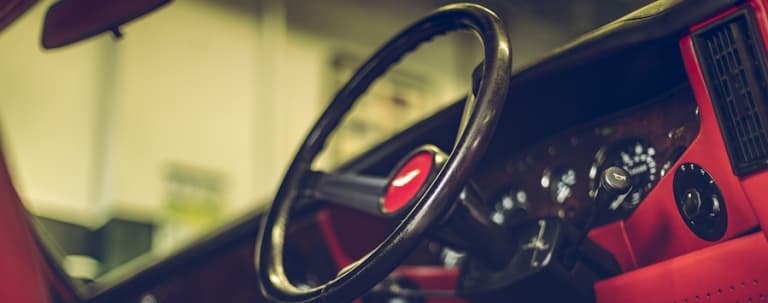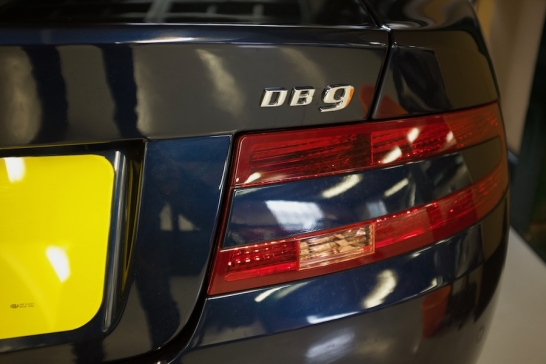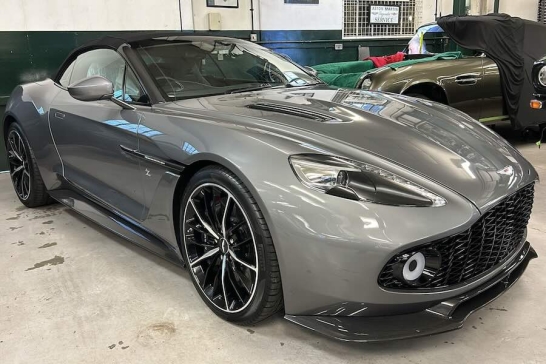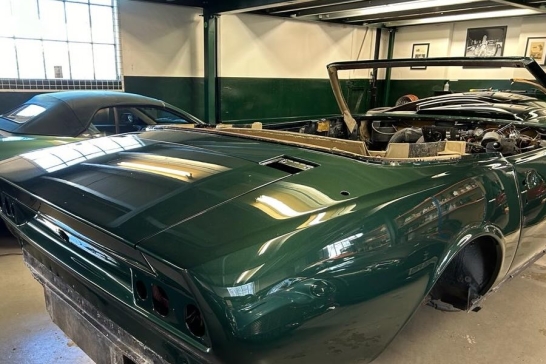When you love Aston Martins as much as we do, the concept of ‘improving’ on the driving experience they offer can almost seem sacrilegious. From the aesthetics of the exterior design to the style of the interior fittings and the feeling you get behind the wheel, the point of owning an Aston Martin is surely to simply enjoy everything that the designers and manufacturers got completely right when they were putting the car together?
As with so many things, the honest answer to that question is yes and no. In simple terms, there’s no such thing as the perfect car, but an Aston Martin in prime condition gets pretty close. That’s why we work for a lot of clients seeking to return a car that’s seen better days to its former glory through a comprehensive restoration process.
Alternatively, many owners appreciate the sheer style of an older, classic Aston Martin and want to be able to augment that style with contemporary modifications such as sat nav and air conditioning. Whether we’re looking at tweaking a few minor details or carrying out a comprehensive rescue mission on a car that’s seen much better days, we always work in a way that stays true to the Aston Martin ethos, style and aesthetic.
Restoration
The degree of work we carry out on a car such as a DB4 that comes to us for restoration is dictated entirely by the condition it’s in when it reaches us. In many cases, the car as a whole is pretty much intact in its’ original condition but is looking and feeling a bit tired, whereas in others the vehicle has sadly been left to rot and almost every aspect is in a poor condition and needs a thorough reworking.
In both cases the work we do is designed to be sympathetic to the original patina of the car. This means polishing and improving it in a way which – ironically – produces results which don’t look like any polishing and improving has actually been carried out.
A customer might bring a car to us, for example, which is a little rough around the edges and has clearly seen better days. We’ll work through it mechanically from top to toe to fine tune it, fixing or replacing any components which need to be fixed or replaced. Then we’ll repaint the car and touch up some of the bits of interior – because many of the cars we restore don’t need a complete internal restoration - creating a result which is authentic and true to the spirit of the car as it was when it first rolled off the production line.
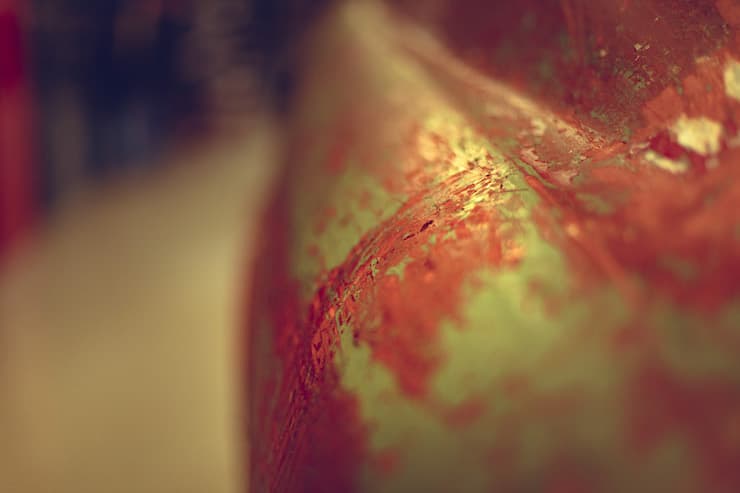
A genuine restoration, from our point of view, creates results which polish in an unpolished manner, because the last thing a restored car should look like is actually a restored car – we work to make sure it simply looks like a beautifully preserved Aston Martin. This means, for example, keeping aspects such as the original leather and the original chrome intact while replacing the carpets, so that the car doesn’t actually look like it’s had work done on it.
In many cases that’s the kind of approach the owner is looking for; they chose an Aston Martin for specific reasons and they want to keep all of that intact while freshening up the aspects which need reviving.
Modifications
In other cases the DB4 which arrives at our workshop is in a pretty bad state and needs the interior replacing completely and a full mechanical overhaul - that’s when we tend to introduce fairly fundamental modifications such as aluminium radiators, electric cooling fans and an engine upgrade to four litres and three carburettors rather than two.
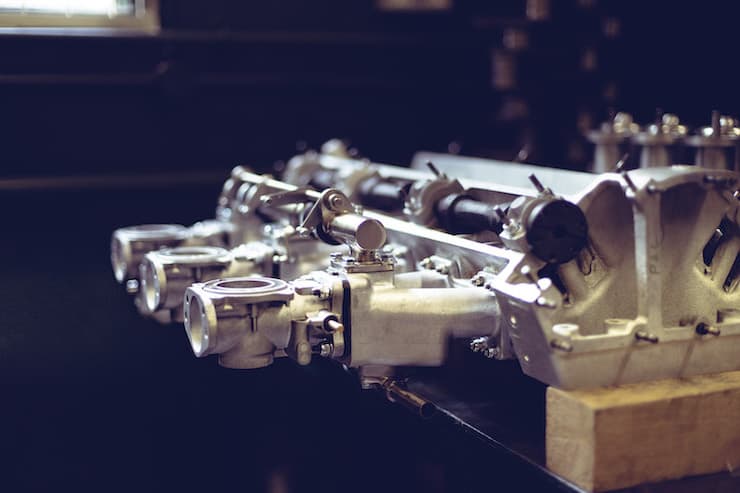
Another aspect which we frequently need to modify for the DB4s we work on is the brakes. Work to improve and enhance the brakes involves crafting the kind of callipers usually seen on the DB5 or DB6, and replacing the Dunlop piston style of calliper that the DB4 was originally equipped with.
Work of this kind often has to be carried out because the original brakes were fitted without metal backing plates to support the brake pads. The upshot of this rather foolish design choice was that the material of the brake pad would simply expand through the impact of the piston pushing onto it directly, and ultimately would become jammed inside the callipers themselves.
The aluminium radiators which we fit to DB4s are chosen for the simple reason that they disband the heat more efficiently and so keep the engine cooler. This is particularly appealing if you happen to spend any time driving your Aston Martin in countries such as France or Italy, where the ambient temperature is likely to be much higher.
The key part of the work we do when completing a modification such as an aluminium radiator is that we design the unit itself to our own specifications and paint it in a way which effectively disguises it completely. This is a fundamental part of the modification work we carry out in particular – everything is done in a way which ensures that it is hidden.
Our aluminium radiators get the job done and keep the car cooler but they do it without looking anything like aluminium radiators, so people won’t see or know about the work that we’ve carried out.
Hidden Modifications
The commitment to hiding the changes we make runs across every kind of upgrade, improvement or modification we carry out. If a customer wants heated seats, for example, then we can make it happen with all of the wiring and switches needed hidden from view, and the same applies if they want to stay cool rather than warm.
An air con system fitted to a car like a DB4 will be hidden in two ways – in the engine bay itself the system will be fitted lower and with the pipe work hidden from view, while inside the car the cooling impact will be delivered discretely, with absolutely no risk of a large vent blasting chilled air into the drivers face.
The same approach will apply to the switches used to operate the air con, which you’ll struggle to find unless you know exactly where they are. In the past we’ve worked on cars which have been modified by other companies and found ourselves looking at large and unsightly boxes bolted to the dashboard in a way which completely ruins the look of the interior.
Not only is that not how we want to do things, it’s also not what customers are looking for. From DB4s, DB5s and DB6s, through to the DBS and V8s, customers value the fact that we can deliver the modifications they want without impacting on the authenticity of the car in any way.
Modifications on the V8
The mention of the V8 is interesting, in that this is an Aston Martin which comes equipped with air conditioning as standard, but on which we often have to upgrade the brake system. The key to providing a comprehensive restoration and modification service for Aston Martins as a whole lies in knowing exactly what the various manifestations of the car are likely to require.
In the case of V8s, for example, the brakes fitted originally were simply not up to the job and spoiled the enjoyment of the cars. The material used for the front brake discs was of such poor quality that it would heat under driving conditions and start to warp, leading, after a month or two of motorway driving, to discs which were badly warped and led to jittery handling when, for example, a driver was slowing into a roundabout after hitting 70 or 80 miles per hour on the motorway.
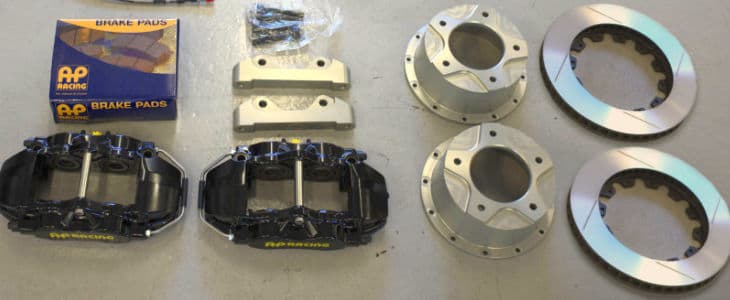
We dramatically improve V8 brakes by fitting a larger and more modern calliper which we actually developed ourselves in conjunction with AP Racing, and this enables the use of much more up to date brake pad material and consequently a driving experience which enhances confidence.
Power Steering
When it comes to power steering, on cars fitted with an original hydraulic system, or cars that were not originally fitted with anything, we fit a very effective electronic power steering which is hidden inside the steering column, and which the driver can switch on and off, as well as altering the rate of lightness.
As far as the driver is concerned, the impact of power steering of this kind is genuinely transformational, and people need to dispense with the notion that all it really does is make parking easier to manage.
The truth is that if you’ve got a fully functioning set of muscles you should be able to handle parking under your own steam, whereas what power steering actually delivers is a nimble driving experience and the end of what we like to call ‘bumpsteer’.
This refers to the phenomenon of the shaking which is transmitted up through the steering column and into the steering wheel itself when an older DB4 or DB5, without power steering fitted, drives over obstacles such as potholes and drain covers. In addition, the power steering we fit facilitates comfortable and relaxed one-handed driving, enabling drivers to take the bend of a roundabout, for example, while steering with one hand and changing gear with the other.
In simple terms, the power steering we fit delivers a more pleasurable driving experience, making it easier to appreciate the car itself and keep pace with traffic without having to wrestle with a steering wheel which is trying to bounce out of your hands.
A Quiet Life
A type of modification which we’re often asked to fit on older models takes the form of sound deadening and heat insulation, which is provided by a lead sandwich fitted under the carpets, under the back seats and in the door panels. Newer models such as the V8 don’t need that but when we restore an older DB4, DB5 or DB6 then it’s something we deliver as standard.
Many owners of cars which don’t need a full restoration come to us purely for a modification such as heat and sound deadening as it improves the driving experience and is regarded as a little present which they treat themselves or their car to.
A Gift to the Car
When it comes to working on V8s the modifications we carry out have often been less dramatic changes which can honestly be defined in this way – the owner purchasing a gift for themselves or even for the car. During the 80s, for example, there was something of a trend for fitting a Vantage spoiler or driving lights to a V8, as well as BBS spec wheels, or brown aluminium wheels.
At the most extreme end of the phenomenon of modifying Aston Martins is the work we delivered for one of our customers driving a DB 6 Volante around the south of France. As well as switching the car from right to left hand drive we also gave it heated seats, sat nav and air conditioning, with the switches needed hidden behind the flip-down grill on the radio.
In many cases, the art of effective modification and restoration lies in knowing when not to change things. If we’re working on a DB4 GT, for example, we wouldn’t be fitting air conditioning, since the high value of a car of this kind is based, in large part, on its’ authenticity. The same car, for example, would have excellent aluminium brake arms and bigger pads, so in terms of handling the only fundamental upgrading needed would be to the engine. And on no account would we tamper with the original Borrani wheels, since absolutely nothing could look better on a DB4 GT.
Getting it Wrong
As you might have gathered by now, we adopt a fairly purist attitude toward the restoration and modification of Aston Martins; the result being that the work we carry out always maintains or even enhances the value of each vehicle. We’ve worked on enough cars to know that not everyone takes the same approach as we do. We’ve seen things which we regard as sacrilegious and, while issues of this kind are always going to come down to personal preference to a degree, we don’t hesitate to label some things as simply wrong.
For example we’ve spotted some deeply unappealing wheels on DBs, as well as repaint work which involves older cars being painted in modern, metallic colours or paint with a large metal flake. What needs to be remembered is that getting it wrong in this way – wrapping a DB4 in metallic black, for example – isn’t simply ‘wrong’ in terms of authenticity and the original appeal of the car, it will also lower the value of the vehicle.
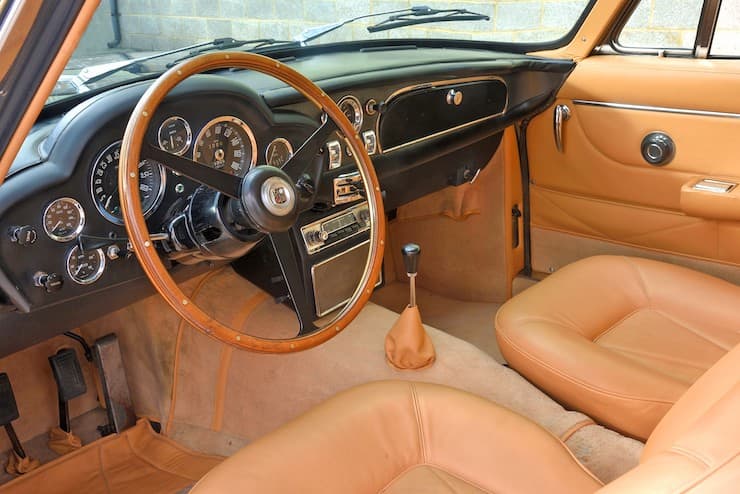
It’s Your Car
Ultimately we deliver what our customers want, but we’ll always offer guidance and share our years of experience and love of Aston Martins to make sure all the work we do enhances the car and its value. If you’ve got any questions about classic Astons, simply drop us a line of give us a call, you’ll always get an honest answer.
